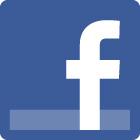Louis le Brocquy
Biography of Modern Irish Painter, Illustrator,
Tapestry Designer.
![]()
![]()
|
Louis le Brocquy |
|
MORE ABOUT ART IN
IRELAND |
Louis le Brocquy, HRHA (1916-2012)The Dublin-born artist Louis le Brocquy is recognised both in Ireland and around the world as one of the great Irish artists of the 20th century. A master of painting (in figurative and abstract genres), illustration, printmaking, tapestry design and set design, his prodigious work has received widespread international praise during a career spanning seventy years. Awarded the Premio Acquisito Internationale for his painting A Family, which was later included in the historic exhibition 'Fifty Years of Modern Art' at Brussels, World Fair 1958, le Brocquy is widely acclaimed for his portrait art, notably his series of Heads of literary figures and fellow artists, which include William Butler Yeats, James Joyce, and his friends Samuel Beckett, Francis Bacon and Seamus Heaney. See also: Most Expensive Irish Paintings. In addition, his earlier Tinker subjects and Grey period pictures have attracted enormous attention in the international and Irish art market, propelling him into the top group of four modern painters of Ireland and Britain along with Francis Bacon, Lucian Freud and David Hockney. At home, Le Brocquy was one of the few painters to be included in the Permanent Irish Collection of the National Gallery of Ireland. |
|
|
Le Brocquy first studied chemistry at Trinity College, Dublin, before entering the family business in 1934. Four years later, he left Ireland for two years to study paintings by the great masters in the National Gallery (London), the Louvre Museum (Paris), Venice and Geneva. He returned to Ireland in 1940, to begin a career as a self-taught artist. Along with other contemporary Irish artists, such as Mainie Jellett (1897-1944), Evie Hone (1894-1955), Nora McGuiness (1901-80), and others, he was a founder-member of the Irish Exhibition of Living Art in 1943. Three years later, in 1946, he moved to London where he had his first solo exhibition in 1947. In 1958, he married another Irish artist, Anne Madden, and settled in the south of France. Le Brocquy's prodigious painting career has included seven overlapping periods: his Tinker paintings 1946-1948; his Grey Period 1950-1956; his White Period 1956-1966; his Head Series 1964-2006; his Procession Series 1984-1992; his Human Images 1996-2004; and latterly his Homage Paintings 2005-2006, which commemorate some of his favourite predecessors such as Velazquez, Francisco de Goya, Paul Cézanne and Edouart Manet. |
 |
In addition, his still-life painting includes: Still life with Book and Penny (1941); Still life with Apples (1951); Study for Flowers (1953); Still life with Grapes (1955); Fruit Now and Then (1970), Fruit in the Hand (1974). He was a keen student of the Renaissance paintings of Titian (1485-1576), as well as the nineteenth century French artists Edgar Degas (1834-1917) and Edouard Manet (1832-1883). Above all, he was inspired by the great Spanish painters El Greco (1541-1614), Velázquez (1599-1660) and Goya (1746-1828) for their use of whites and greys. A major focus of Le Brocquy's art is the human face and head, which he sees as merely the physical iceberg-like manifestation of the spirit which lies beneath. In these pictures, he tries to (as he says) "paint the head image from the inside out", in order to convey the potential reality of the interior being. |
|
During his long career, Le Brocquy illustrated the work of numerous Irish writers, including Seamus Heaney and Samuel Beckett, as well as Thomas Kinsella for whose translation of The Táin Le Brocquy produced a range of celebrated lithographic brush drawings. Other works illustrated by Le Brocquy include The Playboy of the Western World by J.M. Synge (1970); The Gododdin by Desmond O'Grady (1977); and The Dubliners by James Joyce (1986). In addition, he created the set and costume design for Asmus's critically acclaimed 1988 production of Waiting for Godot, at the Gate Theatre, Dublin. In addition to his mastery of painting, printmaking, illustration and set-design, Le Brocquy was also a world class designer of tapestry art. Indeed, in the opinion of some critics he was a seminal figure in the rebirth of this art form. First introduced to the medium in 1948, as a result of an invitation by the Edinburgh Tapestry Weavers, he later collaborated with the long-established French company Tabard Frères & Soeurs to produce tapestries like: Travellers 1948, Allegory (1950), the Eden series (1951-52), the Inverted series (1948-99), the Cúchulainn series (1973-1999), and the Garden series (2000). Examples of Le Brocquy's tapestries can be viewed in several art museums including the Irish Museum of Modern Artand the National Gallery of Ireland. Today, Le Brocquy is regarded as one of the most innovative representatives of visual art in Ireland. His works have been shown in some of the best art museums in North America, Japan, Australia, France, Spain, Belgium, Slovenia and Mexico, and have been the subject of retrospectives in a number of major galleries, including the Irish Museum of Modern Art (1966). His paintings are represented in many public collections, such as New York's Guggenheim Museum and the London Tate. Le Brocquy was an elected Saoi of Aosdana, and in 2007, he was conferred with The Freedom of the City of Dublin, the highest award the City can bestow. He died on April 25, 2012. Most Expensive Painting By Louis Le Brocquy The auction record for a work by Louis Le Brocquy was set in 2000, when his oil painting, entitled Travelling Woman with Newspaper (1947), was sold at Sotheby's, in London, for £1,158,500. Note: In 2002, Louis Le Brocquy's masterpiece A Family (1951) was sold by private treaty for £1.7 million. |
|
More Information About Irish Visual Arts and Culture • For details of other famous painters
and sculptors from Ireland, see: Irish
Artists: Biographies. ENCYCLOPEDIA OF VISUAL ARTISTS IN IRELAND |